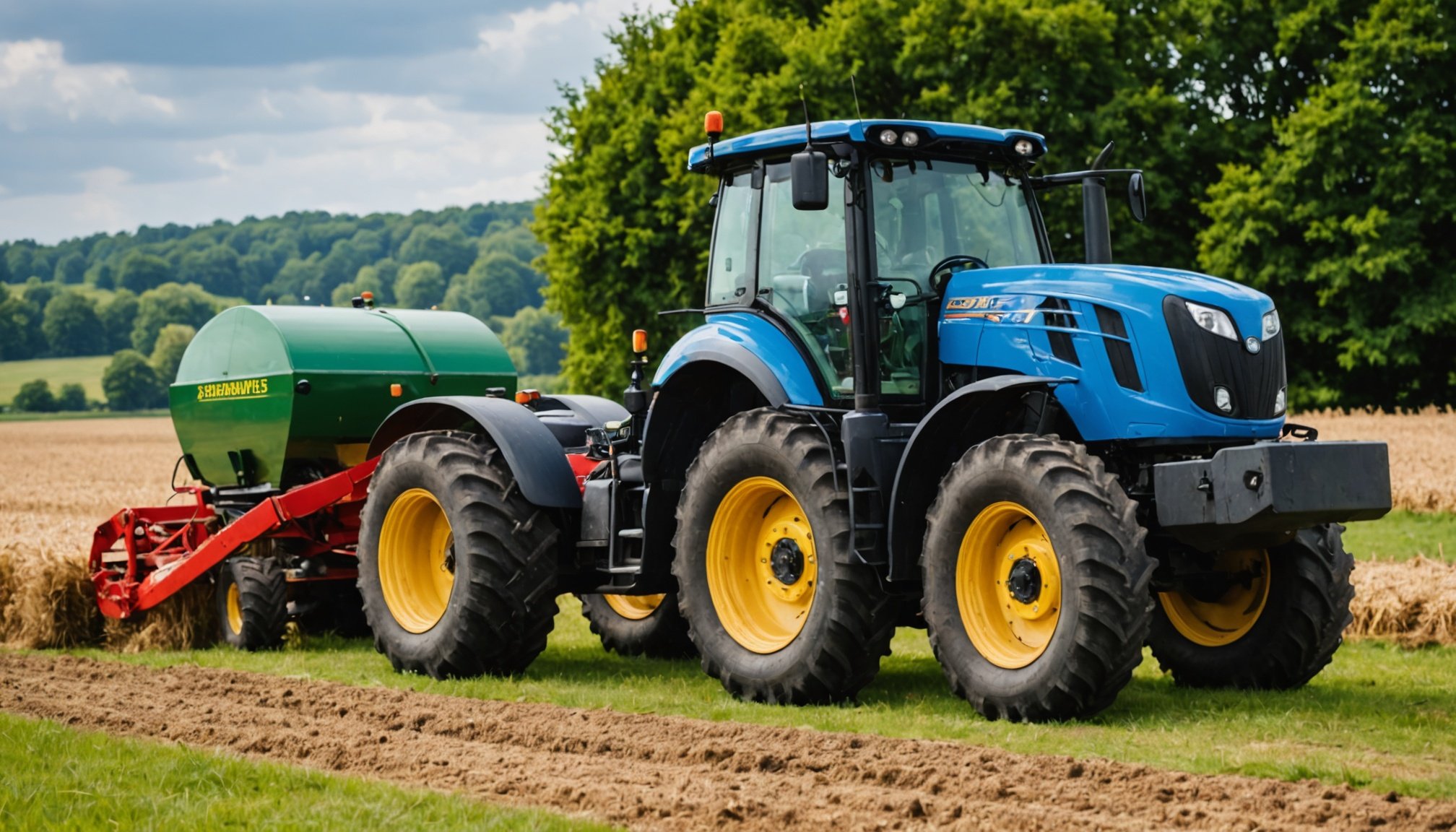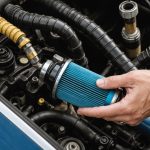Importance of Safety Inspections for Agricultural Vehicles
Ensuring the safety and compliance of agricultural vehicles is crucial for several reasons. Safety inspections play a significant role in maintaining vehicle safety by identifying potential hazards before they lead to accidents or operational failures. These inspections involve thorough checks of critical components, such as brakes, steering, and lighting systems, which are essential for reliable vehicle performance.
Complying with legal regulations through regular safety inspections helps farms avoid hefty fines and penalties. Many regions require periodic inspections to ensure agricultural vehicles meet specific safety standards. By adhering to these regulations, farm operators not only safeguard their workers but also protect their livelihood from costly fines and possible downtime.
Additional reading : How to Effectively Assess Your Vehicle”s Electronic Stability Control: Top Testing Methods Revealed
Importantly, safety inspections can impact insurance coverage and liability claims. Insurers often require proof of regular safety checks to validate coverage and may offer better premium rates to farms with consistent inspection records. In the event of an accident, documented inspections serve as evidence of due diligence, potentially reducing liability claims.
By incorporating regular safety inspections into their maintenance routine, farm operators can enjoy the benefits of improved safety, legal compliance, and potentially more favourable insurance terms. Safety inspections, thus, are an indispensable part of efficient and responsible farm management.
In the same genre : Essential Safety Tips for Changing the Fuel Filter in Your Petrol Vehicle
Types of Essential Safety Inspections
Understanding the types of inspections required for agricultural vehicle types is crucial in ensuring safety and efficiency. These inspections often cover key areas including routine maintenance checks. It is important for agricultural vehicle operators to distinguish which inspections must be conducted regularly and which are vehicle-specific.
Visual Inspections
Visual inspections are the foundation of any safety check. These involve examining the exterior of the vehicle for obvious signs of wear or damage. Key areas to focus on include the condition of tires, lights, and mirrors. Identifying issues early through these inspections can prevent major mishaps on the field.
Mechanical Inspections
Mechanical inspections delve deeper than visual checks, focusing on the internal bearings of the equipment. These checks ensure that engines, brakes, and transmission systems are functioning optimally. Such inspections require more skill and often specialized tools to identify problems not visible to the naked eye.
Equipment-Specific Inspections
Some agricultural vehicle types necessitate equipment-specific inspections. These are tailored to the unique features of particular vehicles, such as tractors or combine harvesters. For instance, a combine harvester may need its threshing mechanism inspected, while a tractor might require a check on hydraulic systems. Regular routine maintenance checks on these specific components are essential to avoid malfunction and ensure productivity.
Legal Requirements for Agricultural Vehicle Inspections
Understanding legal standards is crucial for anyone operating agricultural vehicles. Both federal and state governments impose regulations to ensure safety and compliance. At the federal level, the Occupational Safety and Health Administration (OSHA) provides overarching guidelines. However, each state may have its own specific regulations that detail inspection criteria for agricultural machinery.
Failure to adhere to these inspection mandates can lead to significant penalties. Fines vary by jurisdiction, but often include steep financial penalties and possible suspension of operating licenses. In some cases, non-compliance could also lead to litigation if accidents result from neglected inspections.
To safeguard against such outcomes, it’s paramount for operators to maintain accurate and up-to-date records of all inspections. These records not only prove compliance with inspection mandates but also serve a legal purpose should any disputes arise. Regularly filing these documents can protect against potential liabilities and further emphasizes the operator’s commitment to safety.
In conclusion, staying informed about the specific inspection requirements and diligently following them is not just a matter of legality—it’s integral to operational safety and efficiency. Ensure your agricultural vehicles comply with all relevant legal standards to avoid unnecessary complications.
Best Practices for Conducting Inspections
Successfully conducting vehicle inspections requires adherence to inspection best practices. The frequency of inspections should align with vehicle usage patterns. Vehicles used intensely on a daily basis may require weekly checks, while those used less frequently might only need monthly inspections. This ensures all safety protocols are up to date and vehicle longevity is promoted.
An essential part of effective inspections is having the right inspection tools. A standard inspection kit might include a flashlight, tire pressure gauge, torque wrench, and a checklist specific to the vehicle type. Using these tools boosts the accuracy and efficiency of the inspection.
A comprehensive safety checklist is equally critical. It should cover areas such as brakes, lights, fluids, and suspension systems. Customising this checklist to suit the unique needs of each fleet can significantly improve outcomes.
Training staff in conducting these inspections is key. Consider regular workshops where inspection best practices are not just taught but demonstrated. Incorporate hands-on sessions with real examples, enabling staff to understand what to look for and why each step is essential. Armed with both knowledge and practical skills, staff can ensure their inspections are thorough, and vehicle safety is never compromised.
Consequences of Non-Compliance
Navigating the realm of non-compliance risks can be daunting, with repercussions that extend far beyond financial penalties. At the forefront of these consequences is the prospect of substantial fines and legal ramifications, which can severely impact an organisation’s financial health. Companies often face hefty penalties due to negligence, a clear indicator of how critical adherence to safety regulations is.
However, the financial aspect is just the tip of the iceberg. The impact on worker safety is paramount, as non-compliance can lead to hazardous work environments. Without proper inspections, employees may inadvertently be exposed to unsafe conditions, increasing the likelihood of accidents and injuries. This, in turn, can lead to increased absenteeism, higher insurance costs, and a demoralised workforce.
Neglecting vehicle inspections can also have dire consequences for vehicle performance. Vehicles that are not regularly checked may suffer from unseen wear and tear, leading to unexpected breakdowns, reduced efficiency, and potentially jeopardising project deadlines.
Consider the case of Company XYZ, which faced significant downtime due to neglected inspections. Not only were financial penalties imposed, but their reputation suffered, emphasising the critical need for regular checks. By understanding these potential pitfalls, organisations can proactively mitigate non-compliance risks, safeguarding both their assets and employees.
Resources for Further Information
Navigating the realm of agricultural safety inspections can be challenging, but a wealth of inspection resources is available. Among these are several federal and state agencies dedicated to ensuring safety standards. The Occupational Safety and Health Administration (OSHA) regularly provides guidelines and updates crucial to maintaining compliance and safety on farms. Moreover, state agricultural departments often tailor additional regulations that cater to local agricultural needs.
Educational materials and training programs are pivotal in equipping individuals with the necessary skills for effective inspections. Organizations such as the National Institute for Occupational Safety and Health (NIOSH) offer programs and resources for certification, promoting a thorough understanding of safety requirements and best practices.
Online tools and checklists are increasingly accessible, offering a convenient way to streamline inspections. These tools often include detailed guidelines, checklists, and printable materials that can assist in the consistent application of safety protocols on-site.
By actively engaging with these resources, which include safety guidelines and structured educational materials, individuals and organizations can foster safer working environments. Ultimately, the utilization of these resources helps in building a comprehensive understanding and approach toward agricultural safety inspections.











